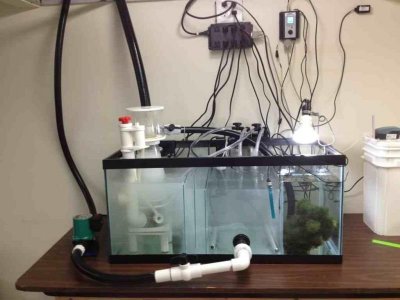AmherstReef
New member
After installing a more powerful external return pump I now know what cavitation means. I had massive micro bubbles and could hear the air inside the pump, now I know why.
The pump inlet and outlet are 1.25" and of course my bulkhead and return plumbing is all 1". I checked with the manufacturer and they said this was fine but obviously its not helping.
I've eliminated the cavitation for now by closing the ball valve a bit reducing the outlet flow. Without re-drilling the bulkhead I will need to try some other changes. Between the bulkhead and pump inlet there is a union, a 90 ,a ball valve and a few couplers. All of these could be causing the cavitation so I'm going to redo this and eliminate what I can to see if that corrects it.
The pump inlet and outlet are 1.25" and of course my bulkhead and return plumbing is all 1". I checked with the manufacturer and they said this was fine but obviously its not helping.
I've eliminated the cavitation for now by closing the ball valve a bit reducing the outlet flow. Without re-drilling the bulkhead I will need to try some other changes. Between the bulkhead and pump inlet there is a union, a 90 ,a ball valve and a few couplers. All of these could be causing the cavitation so I'm going to redo this and eliminate what I can to see if that corrects it.

